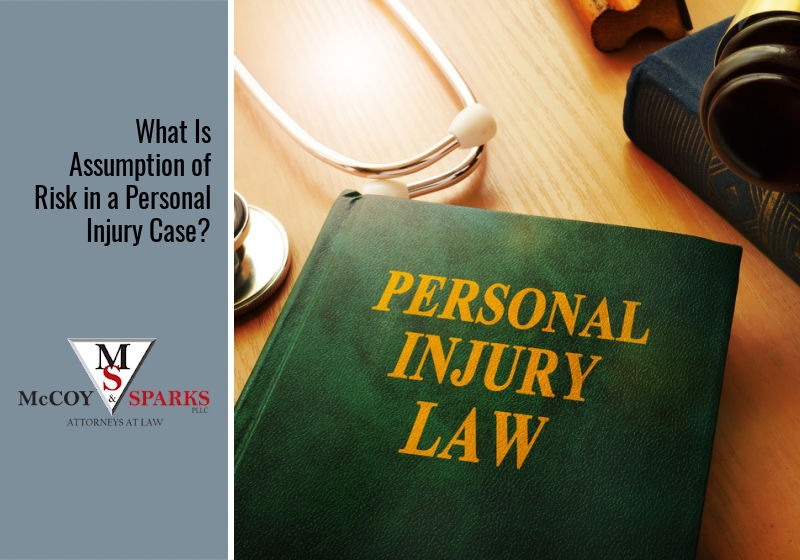
Assumption of risk is a type of legal defense that could jeopardize your personal injury case. If you file a claim against a negligent person or party because their mistake or error omission caused you to sustain injuries, their defense team may argue that you assumed the risk of the activity, meaning that they are not liable for your injuries.
If you’re in the middle of a personal injury case or you’re considering filing, you need to know about this legal doctrine. In this blog, you’ll learn the definition of assumption of risk, the different types, and how to fight against this defense.
Definition of Assumption of Risk
In Kentucky, a court may dismiss a personal injury if the defense is able to prove that the plaintiff assumed the risk of injury. This means that the injured person knew the risks of the activity in which they engaged.
This defense is especially common in premises liability cases, meaning that a person was injured on someone else’s property. Home or business owners will put up signs including “enter at your own risk” or “beware of dog” to indicate that they are not liable in the event that someone suffers an injury on their property.
You’ve likely assumed a risk if you’ve ever signed a gym membership agreement. These agreements will usually have a clause indicating that you exercise at your own risk, so if you suffer from an injury, your gym will deny liability.
There are two types of assumptions of risk: express assumption of risk and implied assumption of risk.
Express Assumption of Risk
Express assumption of risk means that the injured individual explicitly acknowledged the risks of the activity. This is typically done with a liability waiver. If you signed a liability waiver before your injury, you’ll likely not be able to recover damages because you explicitly expressed the assumption of risk.
Some activities that usually come with liability waivers include:
- Amusement parks
- Bungee jumping
- Skydiving
- Trampoline parks
- Scuba diving
- Renting a recreational vehicle
- Cruises
Although signing a legitimate liability waiver can ruin your personal injury case, these waivers are not always valid. For example, the liability waiver cannot protect the defense from intentionally harmful acts and gross negligence.
If you were injured after signing a liability waiver, it’s important to enlist the legal expertise of a personal injury attorney. A qualified attorney can scrutinize any waivers you signed in case they’re illegitimate or flawed.
Implied Assumption of Risk
Implied assumption of risk means that the plaintiff assumed the risk voluntarily even if they didn’t do so in writing. Those arguing that an injured individual assumed risk by implication would likely state the activity in which they participated had inherent dangers.
For example, if you participate in a pickup football game on personal property, you run the risk of becoming injured. In the event that you break your ankle and attempt to hold another football player or the owner of the property liable, the defense would likely argue that you assumed the risk of becoming injured because you engaged in an inherently dangerous activity.
Proving implied assumption of risk is much harder than expressed assumption of risk because what qualifies as an inherently dangerous activity is subjective and may differ from court to court.
Proving Assumption of Risk
When a defendant claims that the plaintiff assumed risk, the burden of proof is on the defendant to prove that the plaintiff was aware of the risks and voluntarily put themselves in danger. This is much easier to prove if the plaintiff signs a legitimate liability waiver, which indicates an express assumption of risk.
If there is no express assumption of risk, the defendant would need to prove that the plaintiff assumed the risk either verbally or through their actions. A common tactic for proving the implied assumption of risk is to use eyewitness testimonies to corroborate that the plaintiff’s words or actions implied that they were aware of the potential dangers of an activity.
Even if the plaintiff argues that they were unaware of the inherent dangers of an activity, a court may rule that a reasonable person should have known that the activity was inherently dangerous, so the defendant is not liable.
For example, if you break an ankle while playing pickup football and argue that you were unaware of the sport’s dangers, a court could state that a reasonable person would be aware of the sport’s inherent risks and throw out your case.
Arguing Against the Assumption of Risk Defense
The best way you can argue against the assumption of risk defense is by contacting a Kentucky personal injury attorney. Qualified personal injury attorneys have years of experience building and presenting cases for accident victims, and with their experience, they can supply an effective rebuttal against the defense and prove that the defendant owes you compensation for damages.
For expert personal injury legal guidance in Central Kentucky, contact the lawyers at McCoy & Sparks Attorneys at Law. Depending on your case, we may be able to help you collect compensation for medical bills, lost wages, pain and suffering, loss of future earnings, and more. Call our office today at 844-459-9467, or schedule a free case consultation here.

